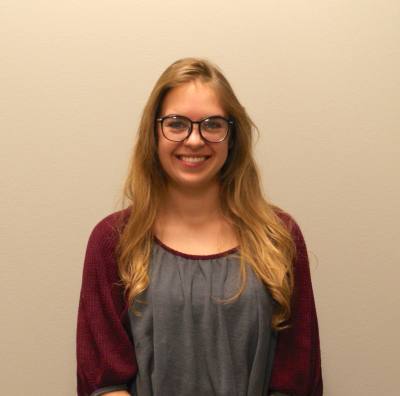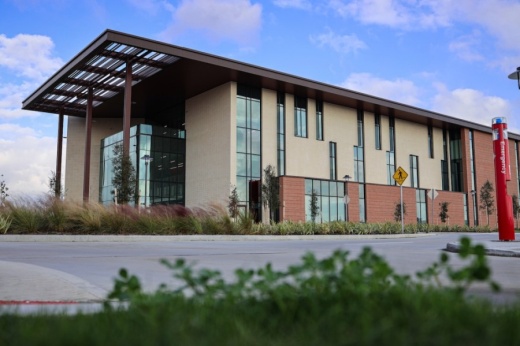When colleges and universities across the nation were forced to grapple with unexpected challenges, they also were left quickly finding ways to adapt to continue to educate and offer services to students.
The disruption the pandemic caused to education was quickly clear: Across the nation, nearly 22% fewer high school students from the graduating class of 2020 immediately enrolled in college after graduation compared to the class of 2019, according to a report by The National Student Clearinghouse Research Center.
Still, leaders from three Katy-area schools said being forced to adapt also brought about new ways of operating that will continue even once the pandemic ends.
Throughout the past year, staff at the University of Houston at Katy tried to exhibit two traits while working to overcome obstacles, said Jay Neal, associate vice president and chief operating officer: flexibility and compassion.
“That’s really helped us to look at faculty staff and students on a case-by-case basis, since not every scenario fits everybody’s needs,” Neal said. “I think our faculty really stepped up to help the needs of both the students, and at the same time, each other.”
Enrollment changes
The past 12 months have been hard on all of higher education but particularly at the community college level, said Zachary Hodges, the president of Houston Community College Northwest.
Many community college students do not fit the typical description of a college student, Hodges said. For example, many students at Houston Community College are in their late 20s, and many work a job or have children.
When the pandemic hit, many students were laid off or were left suddenly to juggle classes online without adequate Wi-Fi or other necessary resources at home.
“Their expectation was they would be in class in person, and then all of a sudden, they’re faced with their classes being online, and a lot of students weren’t equipped,” he said.
Understandably, higher education became a lower priority for many community college students, Hodges said. The school saw this reflected in enrollment, which was down about 10% both semesters during the 2020-21 school year.
Conversely, enrollment at UH increased, Neal said, explaining enrollment numbers for the university as a whole were up about 2%. At UH at Katy specifically, between spring 2020 and spring 2021, the total student headcount increased more than 200%, Neal said. The percentage seems particularly high because the student headcount is fairly small: The student headcount grew from 115 to 353 students.
Regardless of the size of the increase, the increase speaks to how the Katy campus is offering programs to meet the needs of the community, Neal said.
For example, students in the nursing college, which will graduate its first cohort of Katy nursing students in May, have been able to embrace real-world opportunities this year, such as administering COVID-19 vaccines, that they would not have been able to if it were not for the pandemic, Dean Kathryn Tart said.
“[Students] are getting into the community and serving the community,” she said. “The outcome of our students is that they are clinical experts and nurse leaders. That’s what we hope to model and what I think these students have been given the opportunity to become.”
The University of Houston-Victoria also saw enrollment increase across its two campuses in Victoria and in Katy, said Jose Cantu, vice president for enrollment management.
Last summer, enrollment was up about 12%, Cantu said. Fall enrollment was up 9%, and spring enrollment was up nearly 5%. The increases indicated to staff that students felt safe and comfortable continuing their pursuit of education during the pandemic, he said.
“I think our position has always been focused on our students and making sure that they have all the resources needed to be very successful,” he said.
For colleges and universities to provide those resources, which included purchasing personal protective equipment, increasing cleaning practices and upgrading technology, it did not come without a cost.
Thankfully, many of those costs were significantly offset by federal funds through the Coronavirus Aid, Relief, and Economic Security Act. About $1.14 billion was allocated to higher education institutions in Texas alone.
“The federal funding does help make up for lost revenue, and 30% of the funds we receive we pass on to students,” Hodges said.
Challenges and opportunities
The challenges of the past year did not stop UHV at Katy staff from finding ways to adapt and continue to offer or even improve services, Cantu said.
“I think of challenges as opportunities,” he said.
For example, the university used few virtual platforms prior to the pandemic, Cantu said. Now, the faculty has found virtual platforms such as Zoom and Microsoft Teams can play a key role in engaging students since more students might be able to attend a meeting virtually than in person.
“I think there’s going to be this very interesting shift in mindset from what we were thinking about with virtual before,” he said. “What many didn’t do with virtual before is now going to be something that’s going to be traditional offering for all our population, students, staff and faculty.”
Similarly, Hodges and Neal both said their respective schools plan to continue offering virtual services, such as virtual advising, tutoring and counseling services, going forward.
“How we do business is going to change,” Neal said. “I think it’s going to be more efficient.”
One of the biggest challenges UH at Katy staff has faced during the pandemic was controlling the anxiety creeping in when planning for the future, Neal said.
“There are all these what ifs,” he said. “We told our staff, ‘Work on these great initiatives, but don’t become emotionally attached to any of them because we’re gonna bless it today but tomorrow or even tonight; it might be out the window.’”
To best prepare for what lies ahead, Neal said the school’s management team is planning to take time in April to examine on a broad scale what is and is not working.
“If we don’t, we’re going to look up, and it’s August, and the students are back, and we missed that opportunity to make corrections in how we do things,” he said. “So we’re very, very mindful of that going forward.”
Planning ahead
Katy-area school leaders each expressed optimism when discussing plans for the fall. Hodges said he expects enrollment to increase and the percentage of how many students who can safely return to campus to steadily increase, too.
“I would encourage any student who is beginning to step out and look at the summer and look at the fall out to really see that there are many great and safe options in front of them,” he said.
Despite the challenges that arose in the past year, a January report from the Texas Institutions of Higher Education projected higher education enrollment to grow by 13% by 2025. The same report predicts two-year colleges will play an important role in reskilling and upskilling Texans who have lost their job or been otherwise impacted by the pandemic.
Locally, more than 2,600 Katy ISD students have completed their Free Application for Federal Student Aid for the 2021 school year, according to the U.S. Department of Education, a key indicator that many in the graduating class of 2021 are planning to attend college in the fall.
As of March 19, students at some KISD high schools have completed their FAFSA at a lower rate than last year. At Cinco Ranch High School, for example, 351 students had completed their FAFSA application by March 19, 61 fewer than the total who had completed their applications by the same time in 2020.
Data from other KISD high schools, however, shows students applying at a greater rate than last year. At Seven Lakes High School, 526 students had completed their FAFSA by March 19 of this year, an increase of 106 from the same time in 2020.
As higher education institutions prepare for what lies ahead, Cantu said flexibility is key: The flexibility and creativity schools embraced in the past year should become the foundation upon which colleges and universities stand.
“When crisis happens, innovation and creativity have to be part of the solution,” he said.
Laura Aebi and Claire Shoop contributed to this report.





